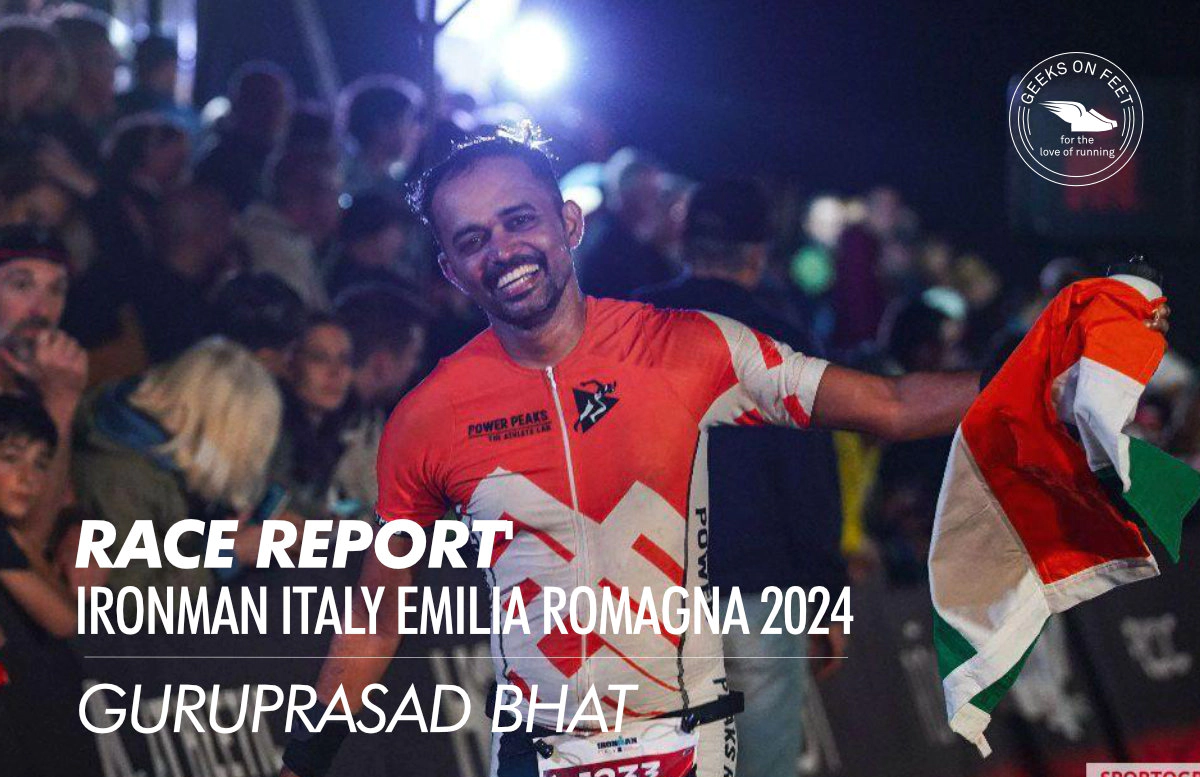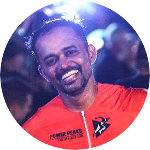
I trained for 15 months for this event. Training for an Ironman triathlon requires prioritizing time, especially for those with jobs, families, and other interests. Training smart is better than just training hard. Most people average 12-14 hours per week for 8-12 months.
My training plan was created by my coach Chaithanya from PowerPeaks. A professional coach expands your knowledge.
The early training days are confusing. It feels impossible, and minor setbacks like the flu or cramps can derail progress. It’s normal, but completing an Ironman is possible with both mental and physical preparation.
The early phase of my training consisted of 3 swims per week, then a long run on Saturday, and a long bicycle ride on Sunday. During the week, there were shorter rides, runs, and strength training. Monday was a mandatory rest day. Doing shorter triathlon distances before a full Ironman helps overcome psychological barriers. I did a sprint triathlon first, then half-Ironman distances, and later longer triathlons. This helped with race-day eating, handling cramps, and the race atmosphere.
As the race got closer, I did more brick training, combining two disciplines in one workout. For example, a 5-hour bike ride followed by an hour of running. I trained around 13-15 hours per week for a year.
Long rides are boring without company, but thankfully I got support from Mangalore cycling groups like WERC and MACC. I didn’t have the newest equipment—no time-trial bike, just a second-hand road bike with added aerobars. Comfort and budget were the focus. Regular practice with Joseph Sir, Hardik Rai, and Harivijay improved my speed and cadence. Indoor cycling with Sarvesh Samaga Sir was essential during the rainy season.
I used the Alloysius pool, starting in January 2023 with a fear of water. A swimming coach helps when you hit a plateau. The right technique, drills, and interval training improve speed. Over time, my fear waned, and I ventured into open water and sea swimming. For long sea swims at Tannirbhavi beach, I had the help and guidance of Sanket Bangre, a professional swimmer.
Running a marathon in a triathlon is the hardest part and determines overall performance. My fellow Mangalore runners helped me prevent injuries. Variations in running—sprints, tempo runs, slow runs—keep it from getting boring.
I participated in a sprint triathlon, then 5 half-Ironman distances, followed by two 3/4th Ironman distances. With this preparation and my family’s support, I was ready for Ironman Italy 2024.
I arrived in Italy a week before race day. A couple of days before the race, a storm hit, blocking roads and train tracks to the race site. With thunderstorms, choppy seas, and headwinds for cycling, fear was high. Too much time, money, and effort had gone into this event. Thankfully, the storm settled the evening before the race.
The cut-off was all I could think about. The race consisted of a 3.8 km swim, 180.2 km bicycle ride, and a 42.2 km marathon, totaling 226.3 km, with a 16-hour time limit. The swim cut-off is 2 hours 20 minutes. The total cut-off for the swim, transition, and bike is 10 hours. The run must be completed within 16 hours from the start of the swim. If you miss these cut-offs, you receive a DNF (Did Not Finish), which is an Ironman triathlete’s worst nightmare.
As we gathered on the beach, we saw the calm sea and were notified that the swim was not canceled or shortened. The sea was calmer than my practice area back home, Tannirbhavi. Nervous energy turned into confidence. It was a rolling start, with pro athletes starting at 7:30 am. We were divided by swim times (<60 min, 60-80 min, 80-90 min, >90 min), with faster swimmers starting earlier. The swim was a wetsuit-mandatory event. I had bought the right size and practiced in it too.
The Adriatic Sea swim was a single-loop of 3.8 km. I completed the swim in 1 hour 25 minutes, with a stomach full of seawater. After exiting the water, I jogged through a 2 km transition area.
I pulled off my wetsuit, changed into cycling gear, and started the 180 km bike ride, which was a two-loop course. Each loop had a small hill, with a total elevation of 700 meters. The highways were flat, and I maintained a good average pace. Refueling included salt capsule, energy gel, and energy bar, taken every 20 minutes: salt first, then gel, followed by the bar. This provided 200-250 calories per hour. I hydrated with ORS powder mixed in water, about 700 ml per hour. Only the last 20 kilometers were tough due to strong headwinds. I completed the cycling in under 7 hours.
After another long transition, I switched to running shoes, checking my nutrition and hydration. The run course was 4 loops of 10.6 km. Running was my strength, and with the sunset and cool weather, it felt good. I completed the first 21 km in 2 hours 15 minutes. However, I slowed down due to GI issues caused by trying a new gel on race day. I walked for 7 km, used the restroom at 28 km, and then felt better. I ran the rest, finishing with a total run time of 5 hours 19 minutes. My coach cheered me on along the way.
Near the finish, I adjusted my bib, took the national flag, and my name was announced as the medal was placed around my neck. In that moment, holding the flag and medal, I reflected on the long training journey. Training for an Ironman involves late nights, early mornings, constant hunger, long hours of solitary training, blisters, chafing, saddle sores, horrible tan lines, cramps, fatigue, tons of preparation, foam rolling, physiotherapy sessions to relieve spasms, missing social events, and mental exhaustion. But yes, it was worth every second.
The feeling when you cross the finish line is hard to describe. I completed the race in around 14 hours.
| SWIM | 01:33:48 | T1: SWIM-TO-BIKE | 00:00:49 |
| BIKE | 7:01:30 | T2: BIKE-TO-RUN | 00:11:41 |
| RUN | 5:19:01 |
OVERALL: 14h:15m:48s
The race was fun and I loved it, but the training made it memorable. Whatever you set your mind to, if you work hard enough, you can achieve it. Other endurance events on my bucket list include Marathon des Sables and UTMB. The training will be long and tiring, both physically and mentally. But anyone can dream big and complete it with an incredible sense of accomplishment.

Guruprasad Bhat is a 41-year-old cancer doctor working at KIMS Mangalore, India. If you need further info on his training or other queries, please reach out to him on email(mailto:[email protected])